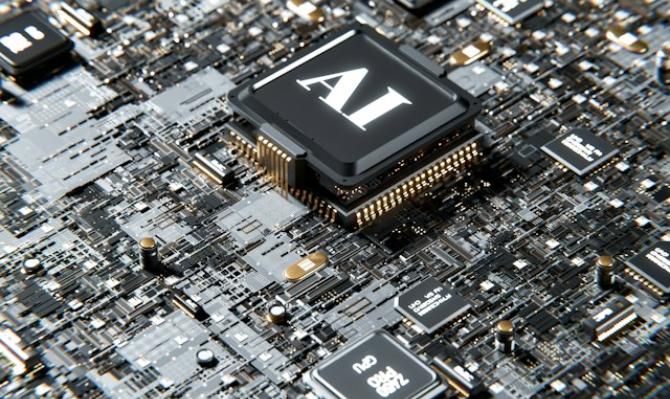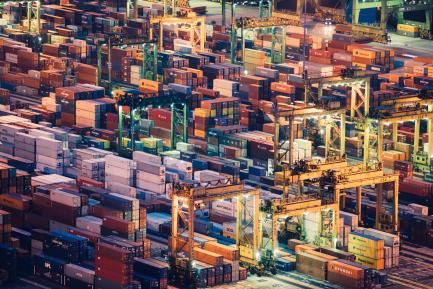Relevance, trends and differences of the technologies of the future
The words «Hey Siri», «Hello Cortana» or «Alexa, find me... » are becoming increasingly commonplace in our day to day lives. At the corporate level, the analysis and use of big data through artificial intelligence (AI) is now common practice to better tailor products to suit customers’ tastes and needs. We are also seeing how it can prove useful in the medical field. Indeed, according to the prestigious medical journal The Lancet Digital Health, AI is as effective as doctors in diagnosing diseases based on images.
But to what extent will new technologies be able to drive the future growth of the Spanish economy?1 To answer this question, we must first measure the degree of these technologies’ penetration in our economy and characterise their trend. This is precisely the focus of this second article of the Dossier.
However, measuring and characterising new technologies in this way is no simple task. AI (one of the pillars of the technology of the future) is a relatively new phenomenon, so there are no data quantifying it in economic terms (besides anecdotal evidence). Therefore, we will seek to measure the use of the technologies of the future with different categories of capital that encompass a range of technologies which, while broader than just AI, will be essential for its development. Let us take a look below.
From anecdote to economic quantification
In order to approximate new technologies’ degree of penetration in the Spanish economy, we have used the EU KLEMS database. This contains data series on capital stock disaggregated by different types of capital, some of which are related to AI technology either directly or indirectly. Moreover, this level of disaggregation is available for several advanced countries, as well as by sector in the particular case of Spain, which will enable us not only to characterise the trend in Spain but also to compare it with what is happening in other countries.
Specifically, among the various categories into which EU KLEMS disaggregates capital stock, we use four of them to approximate the stock of new technologies: (i) software and databases, which constitute the essence of new technologies; (ii) research and development, where these technologies are invented and perfected; (iii) computers, and (iv) telecommunications equipment, essential components of capital for enabling the previous types to function.
Finally, after combining these four types of capital, we build the ratio with respect to the total hours worked (in total for each country or sector). This provides us with a simple measure of the economic relevance of the capital in new technologies: the euros invested in capital stock in new technologies per hour worked.2 It also allows us to compare this with other, more classic types of capital stock, such as transport equipment or other machinery.
Trends and disparity between countries
As shown in the first chart, the differences between countries are by no means trivial, although in recent years all countries have seen an increase in the relevance of new technologies in their economic activity.
Looking at the data in further detail, we can see how the US is at the forefront of new technologies among the group of advanced countries analysed. Then again, this should come as no surprise, since IBM and Microsoft, both US companies, are the leading holders of AI-related patents worldwide.3 France and Germany are at an intermediate level in terms of stock in new technologies, while Spain, together with the United Kingdom, are at lower levels.
The similarity of the capital stock in new technologies per hour worked in France and Germany is surprising. Germany’s industrial leadership does not appear to be translating into a significant investment in new technologies. However, it is the third country in terms of the number of robots per 10,000 workers, behind only South Korea and Singapore and on a par with Japan.4 Furthermore, many of these robots are classified as «other machinery», an umbrella category in which it is difficult to distinguish their degree of technological development. In fact, in this type of machinery, Germany sits above France and even the US.5 However, the capital that we define as being unrelated to new technologies, and in which Germany stands out, has a greater economic relevance (i.e. stock per hour worked) than the capital in new technologies (about three times higher in the case of manufacturing firms and over five times higher in all economic activities in total), although its growth has been virtually zero in recent decades.
On the other hand, the case of Spain also deserves some attention. Unlike the United Kingdom, and even Germany and France, Spain stands out for its high growth rates in new technologies. In this regard, the Spanish economy could reach the same level as Germany or France in new technologies in around 10 years if the trend of the past two decades continues.
Catching up with the US, on the other hand, appears unlikely for European countries for now. The US economy is well ahead in terms of capital stock in new technologies per hour worked, and it also has a much higher growth rate than that observed in most European countries.
If we use other indirect measures of the importance of AI in each country, such as patent registrations, Germany tops the ranking by country in Europe, standing in fifth position worldwide. However, it is far behind the top two countries, China and the US, and even the third and fourth countries, Japan and South Korea (see second chart).6
Sectoral disparity: the case of Spain
Quantifying the economic relevance of new technologies also allows us to analyse the differences and similarities between economic sectors for the case of Spain.7 In particular, a quick glance at the third chart shows us that there are two different types of sectors: industries and services with a high level of stock in new technologies, and industries and services with a medium-low level.8
In fact, those sectors with a high level of capital stock in new technologies coincide with those which, according to Eurostat, are high tech industries and knowledge-intensive services. The Eurostat classification is based on three approaches: R&D expenditure (which is also part of our measure of capital in new technologies), the technological content of the goods and services they produce, and the number of high tech patents they register. Thus, the use of new technologies as a productive factor is associated with the production of goods and services with a higher technological content.
In addition to the differences we observe in the level of capital stock in new technologies depending on the sector, also of note is the fact that there is no convergence between the two types of sectors (high tech and low tech). However, we must be cautious when drawing conclusions from this, since advances in new technologies could shift in the future towards sectors that do not currently use them as intensively, and this could lead to convergence.
In short, the role of new technologies in economies is increasingly important. That said, they do not have the same degree of relevance in all countries or in all sectors, nor are they advancing at the same pace. This disparity could have an influence on both future economic growth rates and the degree to which this growth is inclusive. To better understand the economic impact in the case of the Spanish economy, we invite the reader to continue reading the third article of this Dossier, where we delve into one of the most significant channels of economic impact (the productivity effect) and propose different scenarios for the future for our economy.
Clàudia Canals and Oriol Carreras
1. See the article «The role of new technologies in Spain’s productivity» in this same Dossier for the analysis of the effects of new technologies on Spain’s productivity.
2. Reported in constant 2010 euros.
3. IBM and Microsoft are followed by numerous companies from Japan and South Korea. See WIPO (2019). «Technology Trends 2019: Artificial Intelligence».
4. Based on data according to the International Federation of Robotics.
5. According to data from EU KLEMS.
6. We look at where the first patent was registered by country, since after the first registration the same patent can then be registered in other jurisdictions to provide legal protection. See WIPO (2019). «Technology Trends 2019: Artificial Intelligence».
7. The analysis is performed with a breakdown of 31 economic sectors which comprise both industry and services. The breakdown of industry and services does not encompass the agricultural or mining sectors. In the analysis by country, in contrast, both of these sectors are considered in the economy’s aggregate total.
8. By way of example, the group of low tech industrial sectors includes those such as textiles and construction, while the high tech sectors include those such as chemicals and pharmaceuticals, and optical equipment. On the services side, meanwhile, the low tech sectors include education, while the high tech sectors include information and communications, as well as financial and insurance services.






